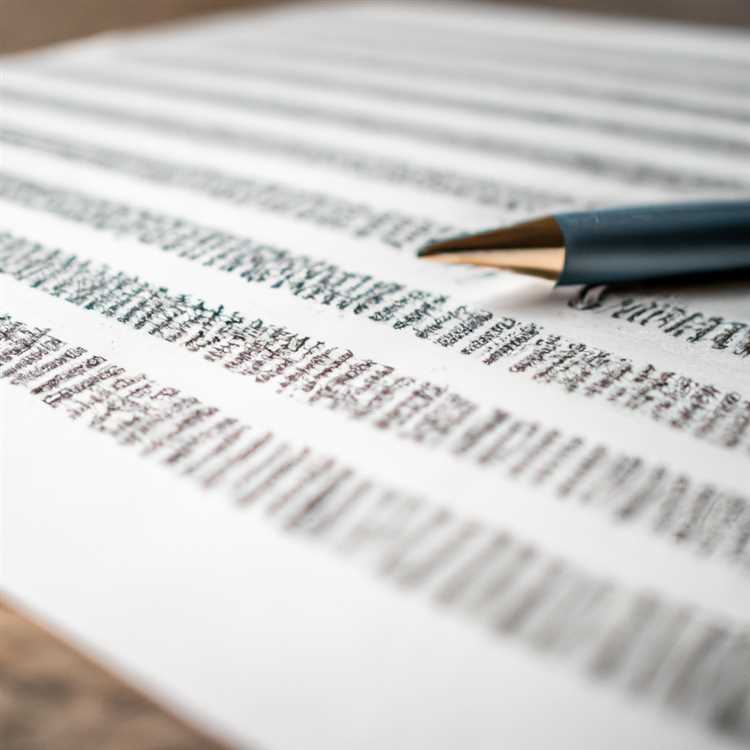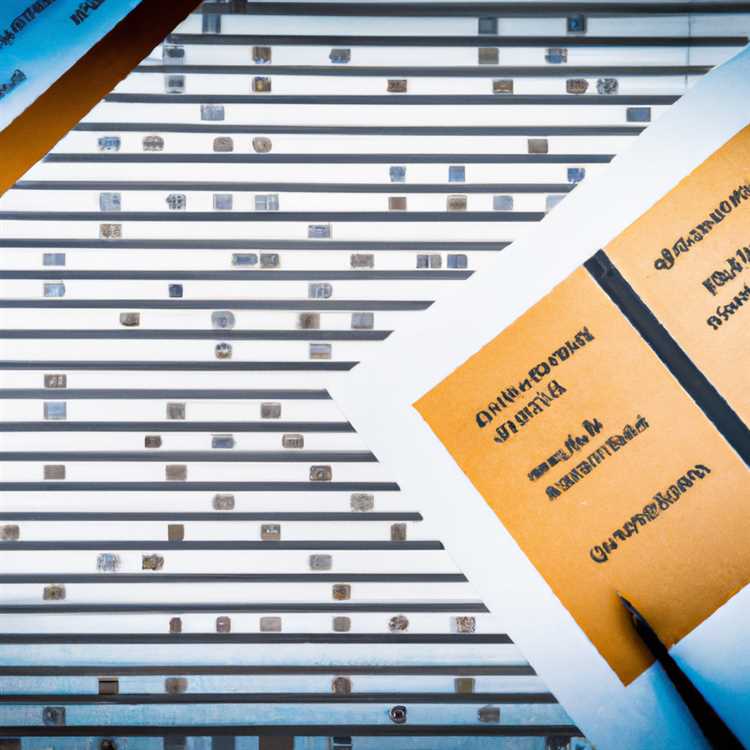- Essay Editor

Mastering the Art of Essay Writing: How to Write an Essay

Struggling with how to write an essay ? Before you begin writing, it's crucial to brainstorm and organize your thoughts. This guide will cover everything you need to know, from generating ideas to polishing your final draft. Let’s break down the essay writing process into simple, manageable steps that anyone can follow.
Key Takeaways
- A successful essay involves preparation, writing, and revisions with a clear understanding of your message and audience.
- The introduction should hook the reader, present the thesis statement, and give an outline of the essay’s main points.
- Effective body paragraphs focus on a single idea, using evidence and analysis to support the thesis, while revisions and proofreading enhance clarity and correctness.
- It is important to recognize that each essay assignment can differ in requirements, and understanding these differences is crucial for success.
The essay writing process is an art that combines the author’s personal perspective on a topic with various styles, from scholarly to whimsical. As a brief form of expression, essays aim to clarify, debate, describe, or recount stories. This craft transcends simple creativity. It requires understanding specific rules and structures.
To produce a compelling essay, one must generate ideas through brainstorming and cultivate a sharp grasp of both the intended message and its presentation. Preparation fosters coherence in argumentation, organization of thoughts, and substantiation—all crucial elements in proficient essay writing. The primary phases encompass preparation work before penning down words, followed by revisions after drafting the piece. It is essential to have a clear idea of the essay's structure and content before you start writing, as this preparation can significantly impact the quality of your work.
Acknowledging who will read your work significantly shapes its tone and vocabulary choices. Customizing your material for reader engagement can enhance connection with them substantially. Crafting essays necessitates merging imaginative flair with established norms — perfecting this skill requires consistent practice coupled with unwavering commitment to excellence in writing pursuits.
Introduction
Your essay’s opening paragraph serves as the initial chance to engage your reader and establish the backdrop for your discussion. A compelling introduction can frequently feature a thesis statement that taps into the readers’ interests or concerns, creating immediate relevance. Opening sentences that either pose an intriguing question or offer a captivating quote greatly increase the probability of retaining reader interest.
To capture attention, it’s crucial for an introductory passage to clearly delineate the primary subject matter while also offering up your thesis statement—a concise summary of your essay’s overarching argument. This well-crafted preamble not only prepares readers for what is to follow in subsequent paragraphs, but acts as a comprehensive guide through the narrative journey you’ve constructed, ensuring they remain hooked from beginning to end.
Understanding the Essay Writing Process
Understanding the essay writing process is essential for creating an organized and clear essay. This process encompasses three principal phases: planning, actual writing, and editing. In the initial planning phase, brainstorming sessions are instrumental in generating a range of potential topics to explore. This crucial phase lays the groundwork for focused thinking prior to commencing your written piece. Understanding different formats is essential for successful writing essays.
During the actual drafting phase of essay writing, you embark on composing your essay using both ideas and structure sketched out in your plan. It’s important at this juncture to have a firm grasp of what you intend to communicate and how you wish to do so, with considerations made regarding who will be reading it as this shapes the overall tone and choice of language within your work.
Finally comes revising—the stage where critical enhancements are made that sharpen both clarity and organization within the text. Effective revision necessitates proper time allocation allowing insights into one’s level of understanding and insightfulness about their subject matter. The aim here is refinement—improving content through additions or deletions—and meticulous reorganization aimed at delivering clearer information thus rendering it more impactful for readers.
Knowing Your Audience and Purpose
When embarking on the essay writing journey, one of the foundational steps is to understand your audience and purpose. Knowing who will read your essay and why you are writing it can significantly influence how you present your ideas.
Choosing a Compelling Topic
The initial phase of the essay writing process involves selecting an engaging subject matter. The choice for an essay topic is often influenced by one’s own passions, which can make both research and composition more gratifying and fruitful.
Posing the chosen topic in the form of a research question can sharpen focus throughout the writing journey and maintain direction within your work. A compelling subject not only captures reader interest but also adheres to predetermined assignment criteria, laying down a solid foundation for crafting a standout essay.
Crafting a Strong Thesis Statement
In the opening paragraph of an essay , the thesis statement is essential as it encapsulates the essay’s primary argument and sets its tone. The essence of whether your essay intends to inform or convince should be mirrored in a precise and concrete thesis that communicates your main stance.
This key element usually resides at the conclusion of your introduction paragraph, giving readers immediate insight into what to expect from your composition. It serves as a compass for both writer and reader, ensuring that all parts of the text are aligned with central contentions. As you draft and refine your work, modifying this critical sentence may become necessary to ensure coherence between evolving ideas within your writing.
Structuring Your Essay
Structuring your essay is essential for presenting your ideas logically and coherently. Typically, an essay includes an introduction, body paragraphs, and a conclusion. This format ensures your essay is well-organized and easy to follow.
In the introduction, you should present the topic, thesis statement, and any other contextual information. In longer essays, providing a brief description of each part at the end of the introduction is beneficial. This helps guide the reader and sets clear expectations.
Good body paragraphs should be organized around one main point, using clear topic sentences and supporting evidence. A five paragraph essay requires logical organization to ensure relevance to the thesis throughout.
The conclusion summarizes the main points and reinforces the thesis without introducing new information.
Writing the Introduction Paragraph
The opening paragraph of your essay serves as a critical opportunity to establish a positive initial impact on the reader. Capturing the reader’s attention can be accomplished with compelling hooks like posing an engaging question, presenting an unexpected truth, or making a striking declaration. It is crucial for the introduction to delineate the subject matter and introduce the thesis statement that encapsulates the central point of your essay.
Ending this introductory section with a concise outline of what will be discussed helps orient readers from the beginning. By meticulously sculpting this part, you lay down firm groundwork for subsequent body paragraphs while securing active interest from your audience.
Developing Effective Body Paragraphs
Paragraphs within the body of a text are essential for demonstrating and supporting the thesis stated in the introduction. They should each center on a principal argument, providing evidence to maintain both lucidity and connectedness.
We will delve into organizing paragraph structure efficiently and how best to present evidence in forthcoming sections.
Organizing Paragraph Structure
Well-organized paragraphs improve clarity and help readers follow the writer’s thoughts more easily. Each paragraph should focus on a single idea, clearly introduced by a topic sentence that relates to the thesis.
Effective paragraphs present relevant evidence and include analysis that connects back to the topic sentence. Transitional phrases enhance coherence, while varied sentence structures and precise language contribute to effective writing.
Presenting Evidence
Within the body paragraphs, support for the central argument should come in the form of data, quotes, or examples that trail the topic sentence. It’s crucial to elucidate how these instances are pertinent to the thesis by adding context, thereby bolstering your argument.
Following an example with a rationale linking it back to your thesis is vital. Utilizing transition words helps in forging coherent links between sentences and maintains a seamless progression of ideas throughout.
Crafting the Conclusion Paragraph
In wrapping up an essay, it is crucial to recapitulate the key points while underscoring the importance of the argument. It’s not merely about summarizing. Rather, one must also impart a sense of finality and larger relevance.
Restating the thesis distinctively serves to refresh the reader’s memory on what constitutes the core point of your discourse. The concluding sentence should offer closure yet stimulate contemplative consideration without explicitly stating phrases such as ‘in conclusion,’ since readers are already aware they have reached the end of your exposition.
Types of Essays and Their Purposes
Essays come in various forms, each serving a unique purpose. Understanding the type of essay you need to write can help you structure your thoughts and arguments more effectively.
Revising and Editing Your Essay
The revision phase is a vital element of the writing process, offering an opportunity to elevate both clarity and cohesion. During this stage, one should reassess the essay’s material with the intent not only to rectify errors but also to enrich its content. Such enhancement may require expansion, reduction or even altering the arrangement of information for improved lucidity and engagement.
Editing serves as a fine-tuning mechanism that sharpens ideas by focusing on grammar, punctuation, and sentence construction to enhance overall writing skills. Input from peers or advisors can be instrumental in pinpointing areas where refinement is needed.
Allocating dedicated time for comprehensive editing and proofreading is essential in achieving a well-crafted final draft that shines with polished precision.
Seeking Feedback and Improvement
Once you’ve completed your first draft, seeking feedback is a crucial step in refining your essay. Constructive feedback can provide new perspectives and highlight areas for improvement.
Proofreading for Grammatical Errors
By concentrating on a single category of mistake while proofreading, you increase precision and diminish the likelihood of overlooking major errors. The process not only corrects grammatical inaccuracies, but also boosts the text’s comprehension.
Utilizing your auditory senses through reading the material out loud can uncover mistakes, as it exposes how the content actually sounds when spoken. Employing these strategies greatly cuts down on grammatical mistakes and enhances the caliber of your essay.
Final Checklist Before Submission
Before handing in your essay, verify that it aligns with all other parts of your application, maintaining uniformity and preventing any mismatch in details. Ascertain the proper submission of supplementary items like portfolios and letters of recommendation.
It’s crucial to adhere strictly to the deadlines set by each educational establishment and be well-informed about their specific submission procedures. Having an editor go over your work can offer additional assurance before you submit it.
To excel in essay writing, it is essential to have a firm grasp of the various steps involved in the writing process. This includes selecting an intriguing topic and forming a robust thesis statement, as well as organizing your thoughts into a coherent structure from the introductory paragraph through to the concluding section. Each component serves an integral function in delivering your concepts with clarity and interest.
Keep in mind that composing essays is an iterative endeavor that necessitates dedication and repetition. Adhering to the strategies provided here will set you on course towards producing captivating compositions that effectively communicate your intended message to your audience.
Frequently Asked Questions
What is the most important part of an essay.
The most important part of an essay is a strong thesis statement, as it clearly outlines your main argument and guides your writing.
Without it, your essay may lack focus and direction.
How can I choose a compelling topic for my essay?
Choosing a compelling essay topic starts with exploring your personal interests and turning them into a clear research question.
This will keep your writing focused and ensure it meets the assignment requirements.
How do I craft a strong thesis statement?
To craft a strong thesis statement, make sure it’s specific and clearly conveys your main argument and position related to your essay’s topic.
This clarity will guide both your writing and your readers.
What are some tips for revising and editing my essay?
To effectively revise and edit your essay, focus on improving content clarity and structure during revision, and refine grammar and punctuation while editing.
Don’t forget to seek peer feedback for valuable insights!
What techniques can I use for effective proofreading?
For effective proofreading, try reading aloud, concentrating on one type of mistake at a time, and breaking your text into smaller sections.
These techniques can really help you catch errors and enhance readability.
Related articles
How to write a college essay.
Every high school student knows that the college essay is a make-or-break part of the application process. There are, of course, distinct requirements involved and strict scoring criteria. It is a personal statement about you and your character. In this article, we will provide a comprehensive overview of how to write the common application essay, what colleges are looking for, and some important dos and don’ts to keep in mind for college essays. Remember that you should start writing college ...
What Is a Dissertation? How Doctoral Students Navigate the Process?
So, when does a person start getting interested in writing a dissertation? You can still be a university student, thinking about starting the doctorate program, or maybe you are already done with the comprehensive exams, and the dissertation process is about to start. Surely, all doctoral candidates must write a dissertation to get the degree they have been working on for years, yet what else? In this article, you will learn about what a dissertation is, as well as dive into the step-by-step pr ...
Chicago Manual of Style: Chicago Style Footnotes
Essays and similar educational papers when you are working on your master's degree are an essential part of any student's life. Even when you become a professional, stating your opinion or establishing a viewpoint might require assembling a written article to reach the necessary audience. And 99% of the time, you will be basing your text on any kind of published work of another specialist. Surely, the process of writing an entire essay requires the most time and effort from the creator. However ...
Perfecting How to Write a Conclusion for an Essay
Struggling to wrap up your college essay? You need a conclusion that ties everything together and leaves a strong final impression. This article will show you exactly how to write a conclusion for an essay, covering how to restate your thesis, summarize key points, highlight broader implications, and avoid common mistakes. Key Takeaways * Restate your thesis in a fresh way to remind readers of your main argument while reflecting on insights from the essay. * Summarize key points cohesively ...
How Long Is An Essay
If you are a student, you undoubtedly face the question of how long your essays should be. The short answer to this question is that it depends. However, there are certain constructs that you should keep in mind regardless of the length of time your professor requires. Academic writing is a fine art, after all. In this article, we will provide an overview of typical essay lengths and the components that they should include. One thing that you should keep in mind is that essays are different f ...
How to Write a Research Paper: The Ultimate Step-by-Step Guide
Writing a research paper can seem daunting, but breaking it down into clear steps can make the process manageable and even enjoyable. An essential part of this process is data collection, which involves gathering information systematically to support your thesis or inquiry. This guide will walk you through each stage of writing a research paper, from understanding what a research paper is to choosing an engaging topic, conducting preliminary research, crafting a thesis statement, and more. By fo ...
Top Transition Words for Essays: Enhance Your Writing Now
Transition words are crucial for crafting coherent, engaging essays. They help guide your readers from one idea to the next or from one paragraph to another, ensuring your arguments flow logically. In this article, we’ll explore essential transition words for essays and how to use them effectively. Key Takeaways * Transition words are essential in academic writing as they enhance coherence and clarity by connecting ideas and guiding readers through the text, helping the reader understand the ...
How to Write a Hypothesis: Step-By-Step Guide
A hypothesis is a testable statement that guides scientific research. Want to know how to write a hypothesis for your research paper? This guide will show you the key steps involved, including defining your variables and phrasing your hypothesis correctly. Key Takeaways * A hypothesis is a testable statement proposed for investigation, grounded in existing knowledge, essential for guiding scientific research. * Understanding different types of hypotheses, including simple, complex, null, an ...


What are you looking for?
Master your text.
- How to find your text's context
- How to identify authorial purpose
- How to interview a character from your text
- What texts can I find verified quotes for?
- I can't find the right quotes from my text
- Can I see the context of where the quote came from in my text?
- How can I get the meaning of quotes explained?
- How can I find the best techniques for my quotes?
Write Your Essay
- I need help unpacking my essay question
- I need helping writing topic sentences for my essay
- I need help writing my quote analysis for my paragraphs
- I need help writing my conclusion for my essay
- Will Artie ensure I'm using HSC Module concepts & language?
- Is using Artie considering cheating?
- Can my school detect AI writing?
Polish Your Essay
- How can I improve a thesis statement I've already written?
- How can I improve a topic sentence I've already written?
- How can I improve quote analysis for a paragraph I've already written?
- How can I improve a conclusion I've already written?
- Can Artie help me cut words down in any of my writing?
Essay Marking
- How does Essay Marking work?
- Where can I access my marked essay if I need to review it later on?
- How does Saved Items work?
- Can Artie generate practice essay questions for me?
- Is Artie free to use?
- Are there any credit limits when I use Artie?
- How is Artie different to using Chat GPT, Gemini, Claude and other AI tools?
- Can Artie help with me persuasive, discursive or imaginative writing?
- What subjects and year levels can Artie help me with?
- I’m a teacher or tutor. Can I use Artie?
- What states is Artie available for?
- How does Artie comply with the Australian Framework for Generative AI in Schools (Privacy, Security and Safety)
- How can I sign up for an Artie Pro Plan?
- How can I cancel my Artie Pro Plan?
- How can I update my payment details?
- How can I access my payment history?
University of Notre Dame
Fresh Writing
A publication of the University Writing Program
- Home ›
- Essays ›
By Camila Batres Castillo
Published: June 06, 2024
- Video Essay
“Art Smart” is an idea for a video I wanted to do for a long time. All my life, my insecurities of being “ less smart” for society because of my talent have been cut very deep within me, still being mindful of it to this day. While my friends had a real knack for calculus, I felt useless when the only thing that came naturally to me was merely “painting photoreallistic hands.” I further explored the topic of being smart in other areas as opposed to STEM fields in my Research Proposal Paper, I had an epiphany, where I was able to learn all of the amazing benefits art has for the development of youth, and the nurturing nature of it in communities and the world. I’ve always had so much fun editing videos, it has been a hobby of mine for some years, I saw this project as an opportunity to showcase my skills in an impactful way that connects with my “Don’t Let The Arts Die.” topic last unit.
I used my media for most of the video to develop my idea. For most of my High School Career, I tended to take videos of my artwork-making process. As portrayed in the video, I took many time-lapses, video vlogs, and technique videos on multiple occasions. A vast diversity of mediums I worked with over the years, for example: oil paint, acrylic, sewing, sculpture, and digital drawing. Alongside process videos, I incorporated many of my pictures. My scanned sketchbook pages, professional photography of my paintings, and screenshots of my “process portfolio” y turned in for my IB Visual Arts course. For this video to be successful, in regards to communicating my idea in an emotive way, I knew I had to incorporate an almost overwhelming amount of personal media, to accentuate personal connection. I wanted to showcase my “talent” in a way that I can’t unless it’s visually.
Aside from my videos, I used six outside sources, five of them being videos found on YouTube. It was an important choice to incorporate other people in the video because the concept isn’t about my relationship with visual arts, but showcasing “art-smartness.” The first video is an MRI screening of the development of a brain, I wanted to further connect the project with my research proposal paper, as there, I discuss the cognitive benefits of art education. Later, I show a colorized video of Frida Kahlo painting on a canvas. Kahlo has always been an immense inspiration to me, I believe she is a genius, of the way she creates such impactful symbolisms and color stories, and evokes so much emotion through them. To me, she is the embodiment of “art smart.” Next, I added the infamous clip of Bansky shredding his freshly-auctioned peace, I included this piece as a nod to how art is controversial and that is the beauty of it. Moving forward, Jackson Pollock practicing his dripping technique appears, Pollock is one of the abstract expressionism art movement fathers, and he also embodies being a force in the visual arts world. He is a testament to being able to create movement in society, as his work normalized creating art for the sake of the technique and process instead of final images. Lastly, an image of people lining up to take pictures of the Mona Lisa at the Louvre Museum is shown, I chose to include this clip to portray how impactful art is ever-lasting and world-changing. I believe the inclusion of these clips gives my “Concept in :60” video more credibility, as it shows the importance of art not only from my perspective but the impact of it in diverse times and locations.
In the final choices for the video, I made other stylistic strategies to make sure my message was conveyed perfectly. I began by presenting the words "art smart" subtly, highlighting the reluctance people feel to admit they are artistically gifted. In contrast, I displayed "less smart" in bold, imposing font to symbolize t to symbolize how society makes it feel like artists are less smart and capable than engineers or other STEM fields. At the end of the video, I strategically synchronized the phrase "art smart, is still smart" in both the voiceover and text, creating a powerful and lasting impact, and ensuring the concept of the video came across. For the background music, I opted for a raw and exaggerated violin solo, not only to match the fast-paced change of media but also to spotlight a different facet of artistic talent beyond the visual realm. The voiceover was drawn from a journal entry I wrote after I finished my research paper, about the power of artistic people and my eagerness for the world to see it. I carefully balanced the violin to prevent either from overshadowing the other. Finally, I experimented with blending videos, overlapping opacities, and applying filters to infuse the video with an artistic and angsty feel, enhancing the overall thematic resonance. These choices were made to articulate a compelling narrative about the societal perception of artistic intelligence and the multifaceted nature of artistic talent.
In the culmination of "Art Smart: Concept in :60," I find myself reflecting on the transformative journey this project has represented for me. From deep insecurities arising from societal views on intelligence to a sense of pride in the significant influence of art on humanity. I feel a great feeling of success when I think back on this creative project since I was able to transform my struggles into a poignant and strong statement about how society views artistic intelligence. "Art Smart: Concept in :60" challenges and redefines society standards, demonstrating the transforming power of art through the complex integration of media, external sources, and artistic choices.
Works Cited
Listed in order of appearance in the video
Batres, Castillo. “Waiting For the Weekend: Chair ” 2022. Batres, Castillo. “Pictures of My Childhood Paintings ” 2021.
Batres, Castillo. “Eye Sketchbook Page (overlap)” 2023. mri215. “3D T2 Brain MRI Imaging.” YouTube, 22 Jan. 2015, www.youtube.com/watch?v=IIX78qGYeAo .
Batres, Castillo. “Sketch of Picking Pimples ” 2022.
Joe McCraw. “AI Colorized Home Movie Clips of Frida Kahlo.” YouTube, 7 Sept. 2019, www.youtube.com/watch?v=tr5knWSJ4tY .
Batres, Castillo. “Collage-ing” 2021.
Inside Edition. “Banksy Artwork Shredded After Selling at Auction May Have Increased in Value.” YouTube, 7 Oct. 2018, www.youtube.com/watch?v=eXKE0nAMmg4 .
Batres, Castillo. “Camila for PR screen recording ” 2021.
Batres, Castillo. “The Making of Art of the Bandage” 2022.
NCGSArt. “Jackson Pollock Action Painting.” YouTube, 12 May 2009, www.youtube.com/watch?v=X3Uj_HAAvbk .
Batres, Castillo. “Sketching and Painting Overlap,” 2023.
HL. “Visiting Mona Lisa at the Louvre on a Busy Summer Day.” YouTube, 11 Aug. 2019, www.youtube.com/watch?v=d6LAvKSPzcI .
Batres, Castillo. “Ghesso (overlap)” 2023.
Batres, Castillo. “Still Live Creation” 2022.
Batres, Castillo. “Cris Digital Collage screen-process” 2020.
Batres, Castillo. “Oil pouring” 2022.
Batres, Castillo. “Mixed Media on Vintage Prints” 2021.
Batres, Castillo. “The Process of “Ballerina Pink” 2022.
Batres, Castillo. “Clay Timelapse” 2022.
Batres, Castillo. “Process Portfolio Overlap” 2023.
Batres, Castillo. “Ispilleglitteronmypictures showcasing overlapped with museum visit” 2022.
Batres, Castillo. “My body of work (images of my oil paintings video)” 2023.
Batres, Castillo. “The Process of a Photo Essay” 2023.
Batres, Castillo. “A visit to the MoMa” 2022.
Batres, Castillo. “The Mint’s Archives” 2022.
Batres, Castillo. “Oil Pastel Portrait overlapped with my sketchbook pages” 2023.
serkan yagiz. “Violin Instrumental No Copyright Music Royalty Free Violin Music No Copyright Free Download.” YouTube, 16 Mar. 2021, www.youtube.com/watch?v=kGOWcyAaBwg .
This video is listed as a “rebuttal” essay on the Fresh Writing site. What arguments and attitudes does this video aim to counter? What claims and evidence are offered in support of that rebuttal?
This video includes a blend of the writer’s original work and borrowed material. How would the video potentially be different if the writer hadn’t included those borrowed elements? What steps does the writer take to acknowledge borrowed material ethically?
How did this writer use the affordances of video to communicate her message? Which choices did you find particularly effective and/or important for shaping the viewer’s response to the subject matter?

Camila Batres Castillo
Camila Batres, from Tegucigalpa, Honduras, is a student in the class of 2027, pursuing a double major in Marketing and Visual Communication Design. In her video essay, "Art Smart: Concept in :60," Camila explores the deep-seated insecurities caused by societal preferences for STEM intelligence over artistic talents. Inspired by her lifelong passion for visual arts and driven by personal experiences, her work delves into the impact that art has on youth development and community enrichment. Camila’s project provides a critique of how society undervalues artistic intelligence. As she reflects on her journey from feeling overshadowed by her peers to recognizing her unique capabilities, Camila expresses gratitude toward her mentors, who supported and guided her transformative exploration of art's essential role in redefining intelligence. With aspirations to become an Art or Creative Director, Camila is committed to advocating for the arts through her work.
Essay Papers Writing Online
Ultimate guide to crafting a stellar essay.

Writing an outstanding essay requires more than just knowledge of the subject matter. It involves a combination of critical thinking, creativity, and effective communication skills. Whether you’re a student looking to ace your academic assignments or a professional seeking to craft persuasive writings, mastering the art of essay writing is essential for success.
In this comprehensive guide, we will explore proven tips and techniques to help you enhance your writing skills and produce stellar essays that captivate your readers and convey your ideas effectively. From selecting a compelling topic to structuring your arguments and polishing your prose, you’ll learn the secrets to crafting essays that stand out from the rest.
Tips for Crafting an Outstanding Essay
1. Understand the essay prompt: Start by carefully reading and understanding the essay prompt. Make sure you know exactly what is being asked of you before you begin writing.
2. Develop a strong thesis statement: Your thesis statement is the central argument or main point of your essay. Make sure it is clear, concise, and well-supported throughout your writing.
3. Create an outline: Before you start writing, create an outline to organize your thoughts and structure your essay. This will help you stay focused and ensure your essay flows logically.
4. Use strong evidence: Back up your arguments with concrete evidence, examples, and research. This will add credibility to your essay and demonstrate your understanding of the topic.
5. Edit and revise: Don’t forget to edit and revise your essay before submitting it. Check for grammar and spelling errors, clarity of ideas, and coherence of your arguments.
6. Be original: Avoid plagiarism by citing your sources properly and expressing your own ideas in a unique and engaging way. Make sure your essay reflects your own voice and perspective.
Understand the Assignment Requirements
Before you start writing your essay, it’s crucial to thoroughly understand the assignment requirements. Take the time to read the prompt carefully and make sure you grasp what is being asked of you.
Pay attention to:
- The topic: Make sure you understand the main subject or question you are expected to address in your essay.
- The format: Check if there are specific formatting guidelines you need to follow, such as font size, spacing, and citation style.
- The word count: Determine the length requirements for your essay and make sure you stay within the word limit.
- The deadline: Note the due date for your essay and plan your writing process accordingly.
By understanding the assignment requirements thoroughly, you can ensure that your essay meets all the necessary criteria and impresses your readers.
Conduct Thorough Research

Before you start writing your essay, it’s crucial to conduct thorough research on the topic. Take the time to gather information from reliable sources such as books, academic journals, and reputable websites. Make sure to critically analyze the information you find and take detailed notes to use as evidence in your essay.
Tip: Utilize online databases and libraries to access a wide range of scholarly articles and studies related to your topic.
Remember: The more research you conduct, the more informed and well-supported your arguments will be in your essay.
Develop a Strong Thesis Statement
A strong thesis statement is the foundation of a well-written essay. It serves as the main argument or central point of your paper, guiding your reader through your thoughts and analysis. Here are some tips to help you develop a strong thesis statement:
Organize Your Ideas Effectively

When writing an essay, it is crucial to organize your ideas effectively to ensure clarity and coherence in your writing. Here are some tips to help you structure your essay:
1. Outline your main points: Before you start writing, create an outline of the main points you want to discuss in your essay. This will help you stay focused and ensure that your essay has a clear structure.
2. Use transitions: Use transitions to connect your ideas and guide the reader through your essay seamlessly. Transition words and phrases can help create a smooth flow between paragraphs and sections.
3. Group related ideas together: Organize your ideas logically by grouping related points together. This will help you create a cohesive argument and make it easier for your readers to follow your line of thinking.
4. Start with a strong introduction: Begin your essay with a strong introduction that clearly outlines your main argument and sets the tone for the rest of your paper. This will grab your reader’s attention and establish the purpose of your essay.
5. Conclude effectively: End your essay with a strong conclusion that summarizes your main points and reinforces your argument. A well-crafted conclusion will leave a lasting impression on your readers and tie together all the ideas you have discussed.
Support Your Arguments with Evidence
One of the key elements of writing a stellar essay is supporting your arguments with evidence. Without solid evidence, your arguments may lack credibility and persuasiveness. Here are some tips on how to effectively support your arguments:
Cite reputable sources: When making a claim or stating a point, it is important to back it up with evidence from credible sources. This could include academic journals, books, scholarly articles, and reputable websites. Make sure to cite your sources properly to give credit where credit is due.
Use data and statistics: Numbers and statistics can add weight to your arguments and make them more persuasive. When possible, use data to support your claims and provide concrete evidence to back up your points.
Include examples: Providing examples can help illustrate your arguments and make them more relatable to the reader. Personal anecdotes, case studies, and specific examples can help solidify your points and make your arguments more convincing.
Anticipate counterarguments: Addressing potential counterarguments can strengthen your arguments by showing that you have considered different perspectives. Acknowledge opposing viewpoints and provide evidence to refute them, demonstrating that your argument is well-reasoned and supported.
By supporting your arguments with evidence, you can create a strong and compelling essay that effectively conveys your ideas to the reader.
Polish Your Essay with Editing and Proofreading
Once you have written your essay, it’s time to polish it with editing and proofreading. This crucial step can make a significant difference in the quality of your writing. Here are some tips to help you refine your essay:
- Check for Spelling and Grammar Errors: Proofread your essay carefully to catch any spelling or grammar mistakes. Use spell check tools and ask someone else to review your work for any overlooked errors.
- Ensure Clarity and Coherence: Make sure your essay has a clear structure and logical flow. Check for any inconsistencies or unclear passages and revise them for better coherence.
- Eliminate Redundancies and Wordiness: Trim down any unnecessary words, phrases, or repetition in your essay to make it more concise and impactful.
- Review the Formatting and Citations: Check that your essay follows the required formatting guidelines and includes accurate citations for any sources used. Make sure your references are properly formatted and cited throughout the text.
- Read Aloud and Seek Feedback: Read your essay aloud to yourself to identify any awkward phrasing or errors. Additionally, ask for feedback from peers, instructors, or writing centers to get valuable suggestions for improvement.
By taking the time to edit and proofread your essay thoroughly, you can enhance its overall quality and ensure that your ideas are effectively communicated to the reader. Don’t underestimate the power of polishing your writing – it can make a world of difference!
Related Post
How to master the art of writing expository essays and captivate your audience, step-by-step guide to crafting a powerful literary analysis essay, convenient and reliable source to purchase college essays online, unlock success with a comprehensive business research paper example guide, unlock your writing potential with writers college – transform your passion into profession, “unlocking the secrets of academic success – navigating the world of research papers in college”, master the art of sociological expression – elevate your writing skills in sociology.

Effective Essay Writing as a Tool for Strategic Communication

Effective communication is a cornerstone of success in both academic and professional settings. Among the various forms of communication, essay writing stands out as a powerful tool for conveying complex ideas, influencing opinions, and persuading audiences.
For those who find the task daunting or time-consuming, utilizing a service to help write paper for me can be an effective solution, allowing students to focus on honing their strategic communication skills while still producing high-quality work.
Mastering the art of essay writing can significantly enhance one’s ability to communicate strategically. This article explores how effective essay writing is vital to strategic communication, outlining key techniques and strategies for crafting compelling essays.
Barnlund’s transactional model of communication with Example
Understanding Strategic Communication
Before diving deeper into essay writing, it is necessary to understand what strategic communication entails. Strategic communication refers to any use of communication by an organization or individual to fulfill its mission; this involves understanding who its target audience is, crafting messages that resonate, and using various communication channels effectively.
Strategic communication within academic settings typically takes the form of essays, research papers, and analytical writings that reflect not only a writer’s understanding but also engage their target audiences—shaping the thoughts and behaviors of readers and listeners alike.
Present Ideas Clearly
An essay written with great structure provides a framework for logically presenting ideas. Such clarity is indispensable in strategic communication wherein messages must reach audiences with differing degrees of comprehension regarding a topic.
Introduction. An effective introduction sets the scene for any essay by outlining its main argument or thesis statement, quickly hooking readers’ attention, and providing context for discussion.
Body Paragraphs. Each paragraph should address one point that supports your thesis statement, with transition sentences facilitating idea flow while leading readers through your argument.
Conclusion. A firm conclusion will summarize and restate critical points and the thesis statement for maximum impact and retention by readers.
Before beginning writing an essay, outline all your ideas first. This helps organize your thoughts and ensures you cover all necessary points coherently.
Persuading through Argumentation
Persuasive essay writing lies at the core of effective essay writing. Such essays attempt to convince their readers of a particular viewpoint or position. This skill is especially essential in strategic communication, where shaping opinions and inducing action are primary goals.
Strong Thesis Statement. A compelling thesis statement is the cornerstone of your argument, providing readers with information they can rely on and outlining your position on any given issue.
Use of Evidence. Supporting your arguments with credible evidence, such as statistics, expert opinions, or real-world examples, not only strengthens them further but also builds trust with your audience.
Counter Arguments. Addressing and refuting opposing viewpoints is an invaluable exercise that demonstrates critical thinking while solidifying your position, showing your reader that multiple angles were considered when developing it.
Utilize the Toulmin model of argumentation, which breaks arguments down into claims, grounds (evidence), and warrants (justifications). This structured approach helps clarify your reasoning.
Engaging Your Audience
Effective communication goes beyond simply conveying information; it also involves engaging your target audience. A persuasive essay that resonates with readers may influence their thoughts and behaviors more successfully.
Know Your Audience. Tailor your writing to meet the needs and interests of your intended readership by considering their backgrounds, values, and possible benefits derived from reading your essay.
Use Rhetorical Devices. Use rhetorical questions, anecdotes, and vivid language to engage readers and make your writing more relatable and memorable.
Emotional Engagement. Generating emotional resonance among your audience can be immensely powerful. Utilize storytelling or personal stories that align with the message to engage their emotions in response.
Conduct an audience analysis to understand who will read your essay and tailor its tone, language use, and examples accordingly. This process should help guide how and what examples to include within its pages.
Clarity and Conciseness
Strategic communication relies heavily on clarity. Successful essays communicate complex ideas simply and directly, forgoing unnecessary jargon or convoluted sentences.
Simple Language. Use simple and straightforward language when communicating while avoiding overly complex terms that might mislead readers.
Writing in the active voice makes sentences more transparent and engaging by emphasizing who performs actions rather than those being carried out against them. Conciseness. Avoid unnecessary words and filler content so each sentence adds value to your argument.
Revision your essays to maximize clarity and conciseness. Review each sentence after writing your first draft to assess its contribution to your main argument; if not, remove or modify it as appropriate.
Critical Thinking and Analysis
Essay writing requires critical thinking—the ability to analyze information, assess arguments, and synthesize ideas. This allows writers to tackle topics from many angles while developing persuasive arguments, which is vitally important when communicating effectively through essays.
Research Thoroughly. Accumulate information from various sources to gain an in-depth knowledge of your subject matter, giving a balanced viewpoint.
Question Assumptions. Challenging one’s beliefs and assumptions on any subject promotes deeper analysis and more nuanced arguments.
Combine Insights. Pull together insights from different sources into one cohesive argument that showcases your comprehensive understanding of a particular subject area.
Keep a research journal while gathering material for your essay. Doing this allows you to keep track of sources and ideas more easily – making synthesis much simpler later.
How to develop Strategic Thinking? What are the skills required?
Revamp and Feedback
Revision is critical in refining ideas, improving clarity, and increasing overall quality. Receiving feedback from peers or mentors may offer invaluable insight that enhances your essay.
Refresh Your Perspective. After finishing a draft, take some time to gain perspective. This will make it easier to identify areas for improvement.
Read Aloud. Reading your essay aloud helps identify awkward phrases, grammar errors, and confusing sections – providing insight into how it will sound to readers.
Peer Review. Share your essay with peers for feedback; this could reveal issues you had missed or provide new ways of strengthening it.
Create a revision checklist that covers areas you would like to improve, such as clarity, argument strength, and grammar accuracy. Use this document during your editing process.
Integrating Visuals and Supplementary Content
When used effectively within digital communication, visuals add depth and engagement; strategic use of various media to convey messages more efficiently is often key to effective strategic communication strategies.
Infographics. When communicating complex data visually, infographics help readers quickly process it all while reinforcing your argument.
Images, Charts, and Graphs. Include relevant images, charts, or graphs to visually represent key points and break up text while making your essay more visually appealing. Videos or External Resources: If applicable, include videos or external resources as additional evidence for your arguments and provide further context or evidence to back them up.
Ensure that any visuals accompanying your thesis directly support it and enhance reader comprehension of your message.
Effective essay writing can be an indispensable means of strategic communication, helping individuals articulate ideas clearly, persuade audiences, and engage in meaningful discourse. By mastering all elements of effective essay writing–structure, persuasion, audience engagement, clarity, critical thinking, revision, and integration of visuals–writers can enhance their strategic communication across many contexts.
As our world becomes more overloaded with data and information, communicating clearly through essays becomes beneficial and essential. By honing their essay writing abilities, students, professionals, and communicators gain power over discussions, decisions, and change within their fields of endeavor.
Related Posts

Financial Planning for OFW Families

Streamlining Financial Workflows: How Automation is Revolutionizing Expense Management

Unlocking Unbeatable Deals: How EpiCar Is Transforming Car Buying in 2024

The Power of Automotive Commercials in the Digital Age: Leveraging Digital Marketing

How to Stop Feeling Overwhelmed While Studying

How To Protect Yourself in Business Transactions

How to Write a Competitive Market Analysis for Your Business

Multiplying Success: The Art of Scaling Your Agency’s Impact
Type above and press Enter to search. Press Esc to cancel.

IMAGES
VIDEO
COMMENTS
Band 3 - 60-69 marks. Band 2 - 50-59 marks. Band 1 - 0-49 marks. Obviously we're aiming for a Band 6 here, so the first thing we need to do is check out what's actually required of us to achieve that mark. The best place to get that kind of info is NESA! NESA describes the HSC English Essay Band 6 criteria as follows;
Step 1: Introduce the second idea you signposted. Even though your first idea was the stronger one, you want to make sure your second idea is argued and analysed just as well. Introduce the idea in more detail just like you did before, making sure to mention how it connects to your thesis of your HSC Visual Arts Essay.
Unlike other AI tools, Artie has been purpose-built for English tutoring and essay writing! • Other AI tools like Chat GPT, Gemini and Claude hallucinate a lot - this is when they create false information. For example, if you ask Chat GPT for quotes from your text, a significant number of these quotes are entirely made up.
Understanding the Essay Writing Process. Understanding the essay writing process is essential for creating an organized and clear essay. This process encompasses three principal phases: planning, actual writing, and editing. In the initial planning phase, brainstorming sessions are instrumental in generating a range of potential topics to explore.
Step 1: Understanding what makes a Band 6 HSC English Essay. Bands are how your HSC exams will be graded - instead of receiving a B+ or a mark out of 100, your exam results will be placed in a specific band. Essentially bands are categories used to identify how well a HSC English Essay fulfils specific criteria.
Write Your Essay; Write Your Essay. I need help unpacking my essay question. I need helping writing topic sentences for my essay. I need help writing my quote analysis for my paragraphs. I need help writing my conclusion for my essay. Will Artie ensure I'm using HSC Module concepts & language?
Essay writing is an invaluable skill to have in high school. With essays required at every stage, the earlier you master it - the better! So...book a holiday workshop with us now! ️ Year 9/10...
I need help unpacking my essay question; I need helping writing topic sentences for my essay; I need help writing my quote analysis for my paragraphs; I need help writing my conclusion for my essay; Will Artie ensure I'm using HSC Module concepts & language? Is using Artie considering cheating? Can my school detect AI writing?
In her video essay, "Art Smart: Concept in :60," Camila explores the deep-seated insecurities caused by societal preferences for STEM intelligence over artistic talents. Inspired by her lifelong passion for visual arts and driven by personal experiences, her work delves into the impact that art has on youth development and community enrichment.
To ace essay writing in your HSC English in your Trials, you need to: Step 1: Polish Your Quote Tables for Your Texts. Step 2: Build a Library of Thesis Statements & Topic Sentences. Step 3: Polish a Model Essay for Each Module. Step 4: Use the Rule of 3 Strategy to Practice Writing in Exam Conditions. Step 5: Have a Clear Plan for When You ...
Learn how to write an awesome HSC English essay for 'Billy Elliot'! + Find a sample paragraph here ...
Your answer will be assessed on how well you: demonstrate understanding of the meanings of a pair of texts when considered together. evaluate the relationships between texts and contexts. organise, develop and express ideas using language appropriate to audience, purpose and form. Question 1 — Elective 1: Intertextual Connections (20 marks)
2 — Elective 2: Distinctively Visual (20 marks) Distinctive images give us an appreciation of the worlds of others. Compare and contrast how this is achieved in your prescribed text and ONE other related text of your own choosing. The prescribed texts are: Prose Fiction.
1. Outline your main points: Before you start writing, create an outline of the main points you want to discuss in your essay. This will help you stay focused and ensure that your essay has a clear structure. 2. Use transitions: Use transitions to connect your ideas and guide the reader through your essay seamlessly.
Essay writing is an indispensable skill for university students, empowering them to articulate ideas effectively and demonstrate their comprehension of various subjects. Whether you're an adept…
The Best Visual Arts Resources: Writing Tips, Major Work Advice & More! Welcome to the best HSC Visual Arts and QCE Visual Arts resources, all in one place! 😎 Whether it's advice on how to study for Visual Arts, how to ace the unseen Visual Arts short answer questions, how to write a Visual Arts essay, where to find inspiration for your ...
Mastering the art of writing involves developing strong skills in grammar, style, and structure. It includes understanding how to effectively communicate ideas, engage readers, and convey messages clearly. Mastery also involves creativity, critical thinking, and continuous practice to refine one's writing abilities.
Mastering the art of essay writing can significantly enhance one's ability to communicate strategically. This article explores how effective essay writing is vital to strategic communication, outlining key techniques and strategies for crafting compelling essays. Barnlund's transactional model of communication with Example
Step 1: Identify the different sides of the question. All Modern History essay questions will require you to take a side. Questions are often directed to one side of the argument through their wording. Examples of this are seen where phrases like 'to what extent' and 'how successful' are used.
She's a passionate teacher and an English expert who recently completed her Honours in Creative Writing. In this article, Jessie's going to share 3 insider tips YOU can use to ace English and improve your writing skills: Tip #1 - The English Writing Formula. Tip #2 - The Applied Word Bank Strategy. Tip #3 - How to Make Study More ...
AI can generate an essay in response to a prompt, but this does not mean that students should stop learning how to write essays for themselves. We do not assign essays so that there will be more ...